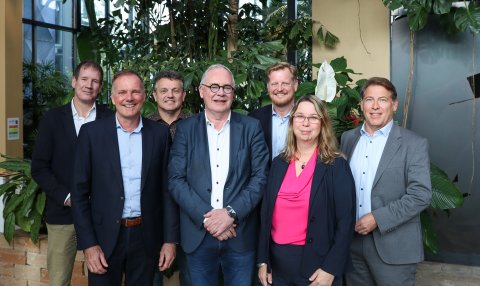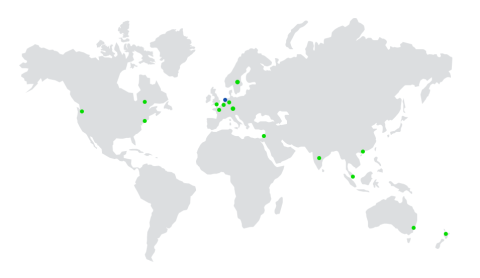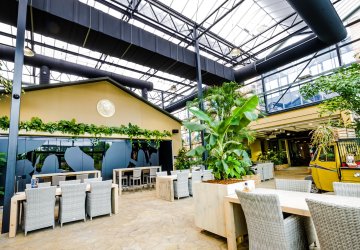
The way we look at office buildings is changing faster and more dramatically than ever before. To keep employees engaged, organizations are transforming their office spaces to do much more in order to fulfill the requirements of their primary users. In this blog series we will examine three recent developments that are driving innovation in real estate and facilities management. The first blog will look at the impact of the COVID-19 pandemic on offices in 2021 and the future role of the office.
The office as a clubhouse and meeting place
As offices begin opening up again following unprecedented shutdowns during the COVID-19 pandemic, it seems that there is a new norm developing around hybrid work: a flexible combination of working from home and working at the office. A recent study shows that 79% of the C-suite plan to let their employees split their time between corporate offices and remote working - if their job allows for it (WeWork and Workplace Intelligence, 2021).
Although the past year and a half has shown that many employees are able to work from anywhere, we see that employees have expressed a real need for the option to go the physical office every now and then – but often not for the same reasons as pre-COVID. The office will serve a much more compelling purpose than ever before. It has to be a hub for collaboration and social interaction that can’t be accomplished virtually. And employees, more than ever, are craving the human connection that a physical office brings. In other words, now is the time to listen to employees and what they want and need in an effective office space. To ensure your office spaces offer that “extra” factor, you will need to create a pleasant, inspirational and optimal working environment that meets the needs that a home office cannot. It's about creating space that nurtures collaboration, connection, and socializing. The office as a clubhouse.
Gym, restaurant, beach bar
Many employers are trying to encourage workers to return to the office - at least part-time. They acknowledge that often the most important conversations do not take place during official, planned meetings. They occur by the coffee machine, in the company gym or at the bar. Working from home usually only involves planned conversations. It can also be difficult to foster creativity and innovation in online video calls. These things are more likely to result from informal meetings between colleagues who enjoy the social interaction.
Measuring real office usage
The realization that employees may not come to the office to complete tasks that they can take care of at home brings a significant change to the office. Occupancy of workplaces and meeting rooms will decline. So, many organizations will find themselves owning or leasing buildings with unused space. This poses the question: How much space is actually needed? Matching workplace and meeting room supply and demand on a daily basis will become key, but at the same time challenging. It will require both historic and current data to show how and when office workspaces are occupied and powerful analytics to identify and predict trends.
Installing occupancy sensors is one easy way to get answers. By attaching a sensor under each desk or using people counters in open spaces you can measure how many and which type of workplaces are being used, and for how long.
Opportunity for cost savings
Occupancy data is extremely valuable for managing and planning, but also for convincing department managers - who in my experience invariably overestimate their space requirements. Making a case to reduce workplaces or move to a flexible desk model is easier when it’s supported by hard facts.
If the average cost per workspace in Europe is around EUR 10,000 a year, imagine how many companies could save millions by downsizing buildings or parts of buildings. That would save them a lot of money - money that can be used to upgrade their buildings to the level needed to make it attractive for people to return to the office.
The office of the 21st century
Transforming your buildings into offices of the future. It’s about creating inspiring spaces with plenty of light, plants, and color, but ensuring those spaces provide employees with the right equipment, technology, and layout to get their work done effectively. Sustainable buildings - which we will talk about in another blog – will be rich in connected sensors to ensure an optimal working climate. It’s also worth mentioning that this type of inspiring office space does not necessarily need to be expensive. Planon’s new “biophilic” steel-and-glass tropical greenhouse is cheaper than a white, concrete alternative.
The COVID-19 pandemic has certainly accelerated the development of the office of the future. Now is the time to listen to employees – and measure actual usage. Armed with real data and feedback, you can size your building according to your true occupancy needs and make your workplace an inspirational, pleasant and productive environment that your employees want to return to during the week.





















